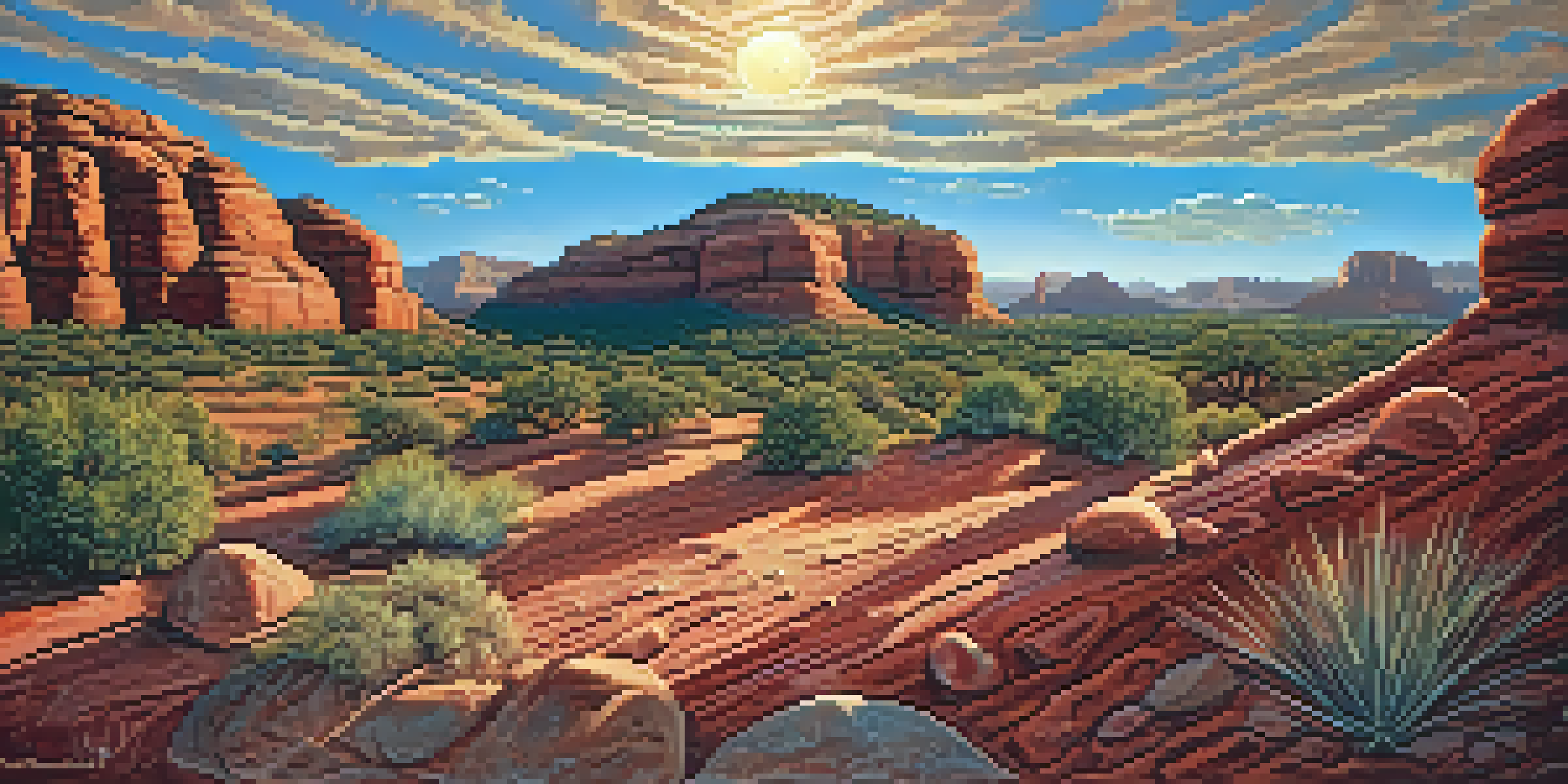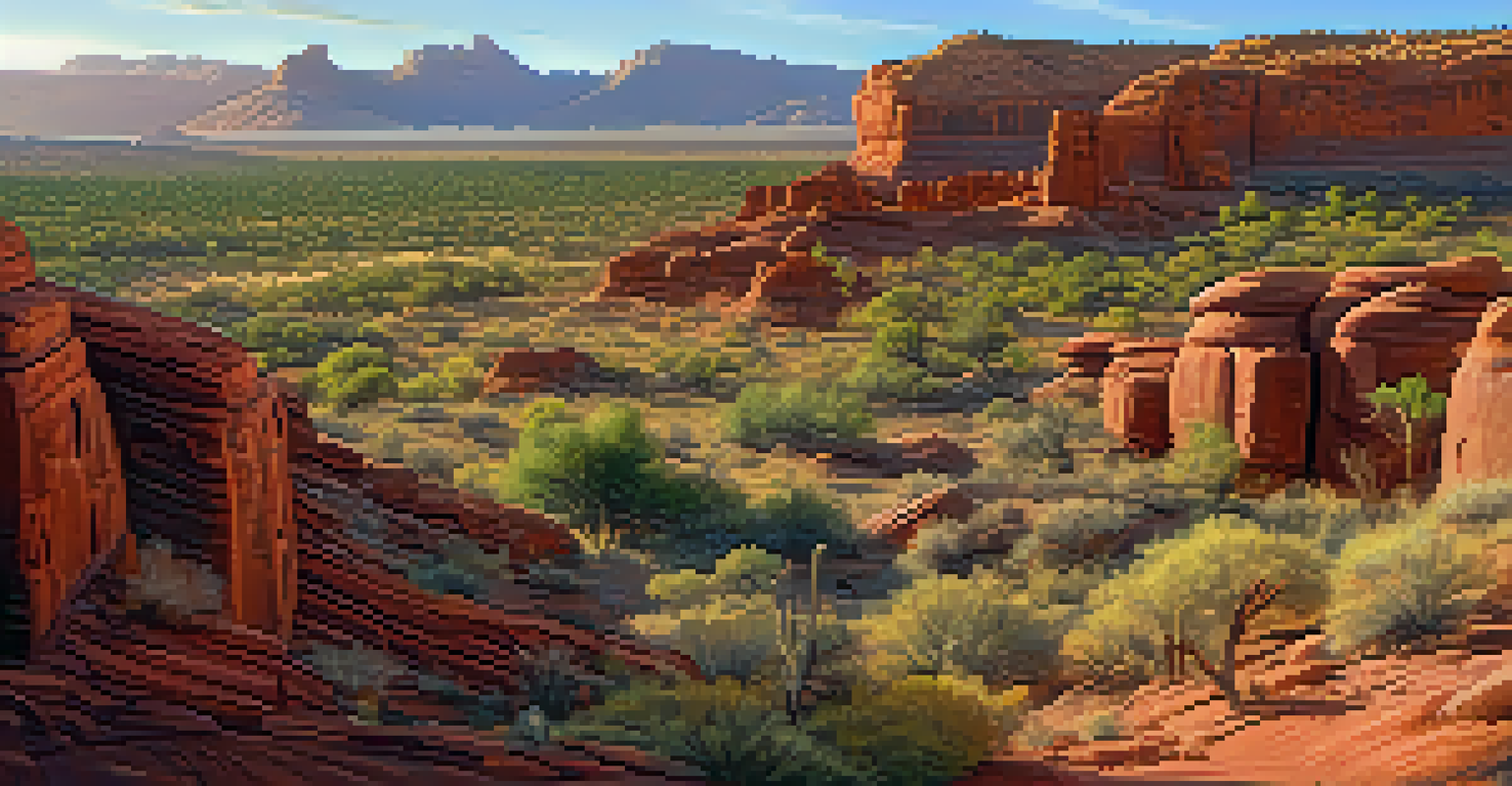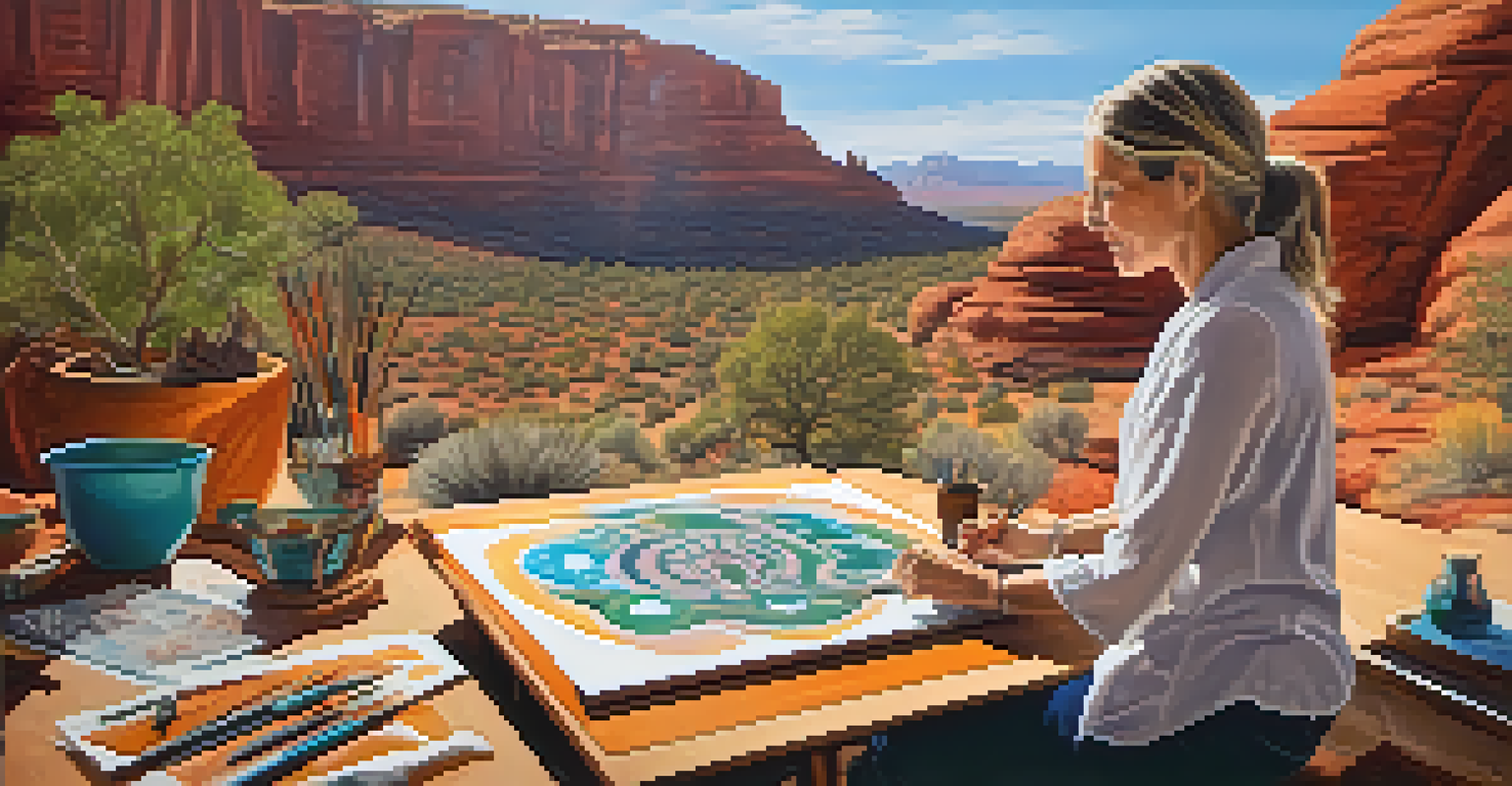Sedona's Enigmatic Petroglyphs: Messages from the Past

What Are Sedona's Petroglyphs and Their Significance?
Sedona's petroglyphs are ancient rock carvings that date back thousands of years. These carvings serve as a window into the lives of the Native American tribes that once inhabited the region. They reflect not just artistic expression, but also cultural beliefs, rituals, and daily life.
Art is the most beautiful of all lies.
Understanding these petroglyphs is like piecing together a puzzle of human history. Each symbol carries meaning, often representing animals, celestial bodies, or spiritual elements. As you explore these sites, you can almost hear the whispers of the past, inviting you to decode their stories.
The significance of these petroglyphs extends beyond their age; they are a testament to the creativity and resilience of the indigenous peoples. Their ability to communicate through art across generations speaks volumes about their connection to the land and each other.
The Various Styles and Techniques of Petroglyph Creation
Creating petroglyphs involved a range of techniques, often using tools made from harder stones to carve designs into softer rock surfaces. This method, known as pecking, allowed artists to leave a lasting imprint of their thoughts and beliefs. The result is a stunning array of styles, each unique to the culture and period.

Some petroglyphs are simple shapes, while others are intricate, depicting complex scenes and figures. The diversity in design showcases the creativity and artistic spirit of the Native Americans. It’s like looking at a gallery of history, where each piece tells a different story.
Significance of Sedona's Petroglyphs
Sedona's petroglyphs provide insight into the cultural beliefs and daily lives of the Native American tribes that once thrived in the region.
Examining these styles can also give insights into the influences and interactions among different tribes. Just as modern artists draw inspiration from their surroundings, so too did these ancient creators reflect their environment and experiences in their work.
The Locations of Sedona's Most Famous Petroglyphs
Sedona is home to several notable petroglyph sites, each offering a unique glimpse into the past. One of the most famous locations is the Palatki Heritage Site, where visitors can view a stunning collection of rock art nestled within beautiful red rock formations. This site, along with others like the Honanki Heritage Site, provides an immersive experience that connects you to history.
The past is never dead. It's not even past.
These locations are often chosen for their natural beauty and spiritual significance, making them perfect spots for artistic expression. As you hike through the stunning landscapes of Sedona, you might stumble upon these ancient carvings, almost as if they were waiting for you to discover them.
Visiting these sites is not just about sightseeing; it's an opportunity to reflect on the stories and messages that have been etched into stone. Each petroglyph is a reminder of the connection between nature, art, and humanity.
Understanding the Cultural Context Behind the Petroglyphs
To fully appreciate Sedona's petroglyphs, it's essential to understand the cultural context in which they were created. The tribes that inhabited this area, including the Sinagua and Hopi, had deep spiritual beliefs that were often expressed through art. Their connection to the earth and sky influenced many of the symbols found in the petroglyphs.
These carvings often served as a means of communication, conveying messages about hunting, gathering, and spiritual practices. They acted as guides for future generations, helping them navigate both the physical and spiritual landscapes of their world.
Techniques of Petroglyph Creation
The creation of petroglyphs involved various techniques, showcasing the unique artistic styles and cultural influences of different tribes.
Exploring the cultural significance of these petroglyphs enriches our understanding of the people who once thrived here. It’s a reminder that art can be a powerful tool for storytelling, bridging the gap between past and present.
The Impact of Weathering and Erosion on the Petroglyphs
Time and nature have taken their toll on Sedona’s petroglyphs, with weathering and erosion posing significant challenges. The harsh elements can gradually wear away the rock surfaces, fading the once-vibrant carvings. This natural degradation emphasizes the importance of preservation efforts to protect these cultural treasures.
Visitors can witness firsthand how the interplay of wind, rain, and sunlight affects the visibility of these ancient artworks. Some petroglyphs may become less distinct over time, making it crucial for those who cherish history to advocate for their maintenance.
Understanding the impact of erosion can deepen our appreciation for these petroglyphs. It serves as a reminder that while they may be ancient, the stories they tell are still relevant today, urging us to preserve and honor our shared heritage.
Modern Interpretations and Artistic Influences of Petroglyphs
Today, Sedona's petroglyphs continue to inspire modern artists and thinkers. Their intricate designs and deep meanings resonate with contemporary themes of nature, spirituality, and connection. Many local artists incorporate these ancient symbols into their work, creating a beautiful fusion of past and present.
This artistic revival can be seen in various forms, from paintings to jewelry, all reflecting the timeless messages of the petroglyphs. By integrating these historical elements, artists breathe new life into the ancient traditions, ensuring that their significance endures.
Preservation of Cultural Heritage
Respecting and protecting Sedona's petroglyphs is essential for honoring the legacies of indigenous peoples and ensuring these cultural treasures endure.
Moreover, these modern interpretations encourage dialogue about cultural heritage and the importance of preserving stories from the past. They remind us that while the techniques may change, the underlying messages remain powerful and relevant.
How to Respect and Protect Sedona's Petroglyphs
Visiting Sedona's petroglyphs comes with a responsibility to respect and protect these ancient artworks. It's essential to follow guidelines set by local authorities to ensure that these cultural sites remain intact for future generations. Simple actions, like staying on marked trails and not touching the carvings, can make a significant difference.
Educating yourself and others about the history and significance of these petroglyphs enhances your appreciation and reinforces the importance of preservation. By sharing knowledge, you can foster a greater sense of respect for these cultural treasures.

In essence, protecting Sedona's petroglyphs is about honoring the legacies of those who came before us. As we engage with these ancient messages, we also commit to ensuring their survival in a rapidly changing world.